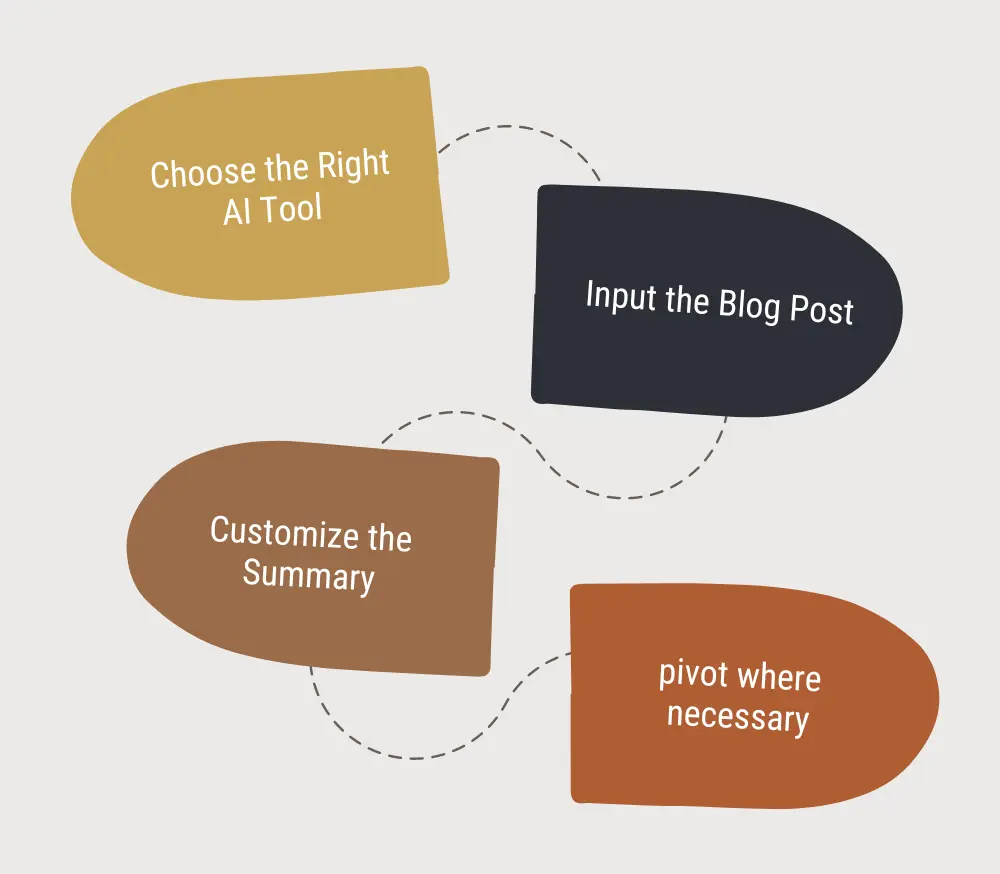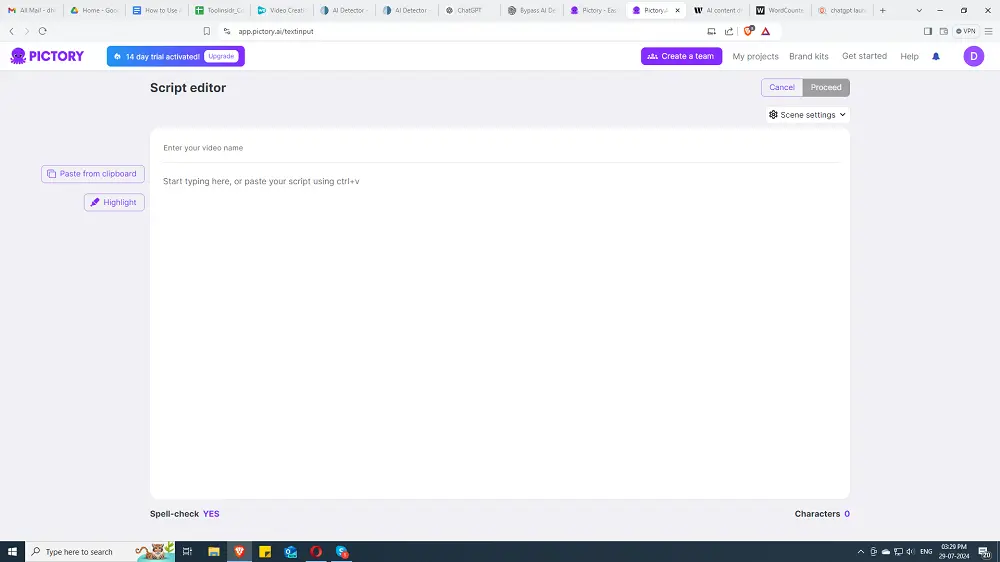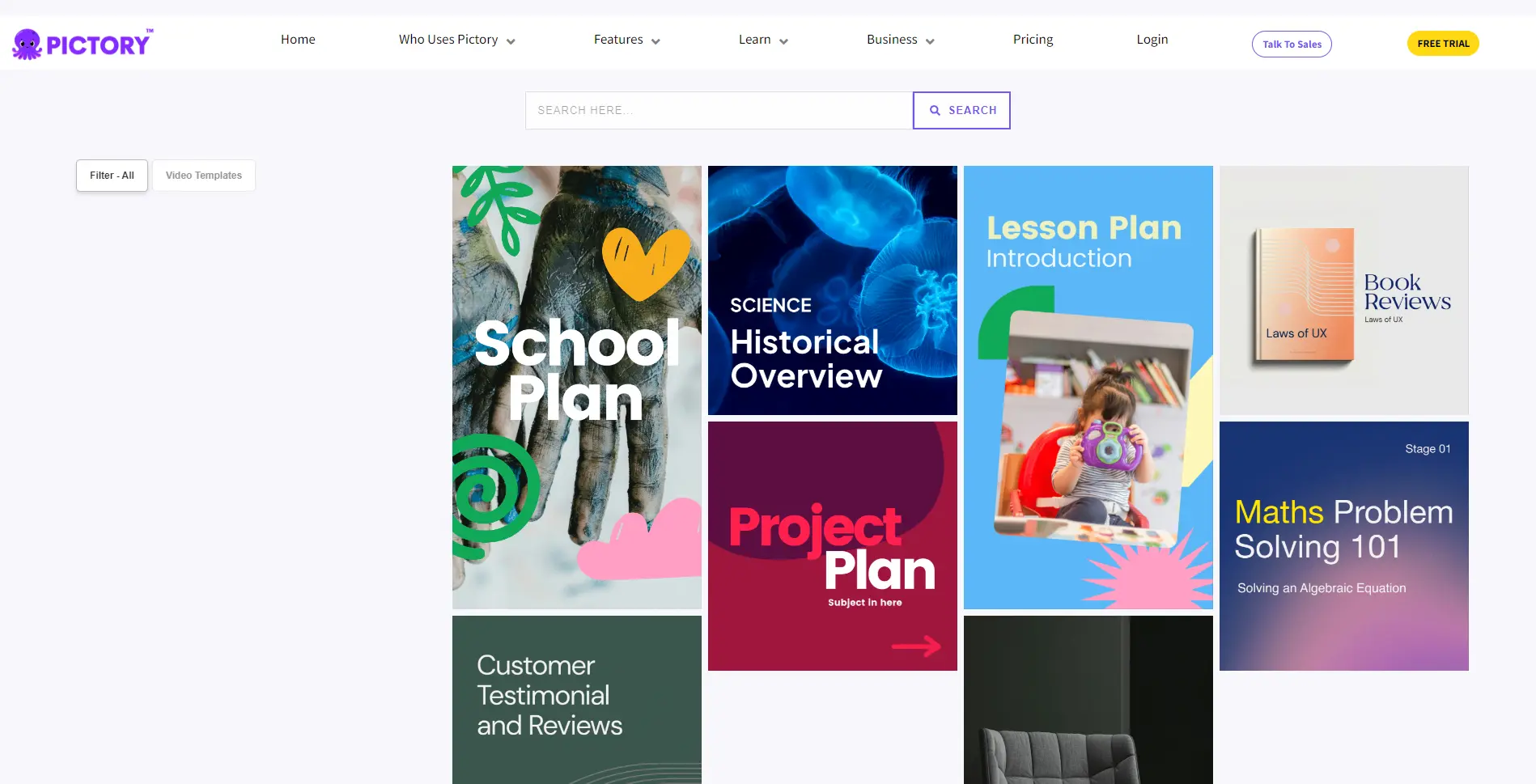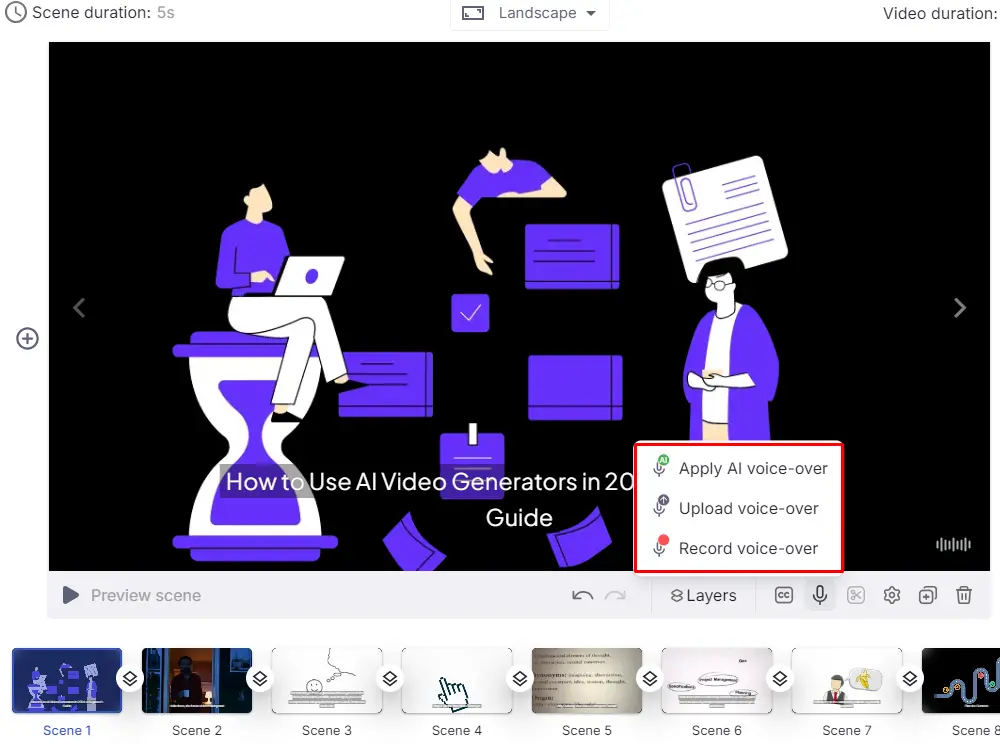Today, there are smart AI video generators that can turn your blog into engaging and aesthetically appealing videos. Want to know How to convert a blog to video with ai?
Hello everyone and welcome to the year 2025 of content creation and guess what?
Your reliable blog has been beautified! Pretend like your blog post is a movie star and it is strolling down the red carpet.
This book is not only good for the beginners, sweating in front of a computer with no program running, but also good for content builders, who know what they want to achieve, but do not know How to convert blog to video with Ai?
Just imagine being able to impress your listeners and add some zest to your blog posts with the help of AI convert!
Take your blog content and toss it into the video world for a complete 360 spin!
Discover the tips on how to make eye-popping videos based on your blog posts with the help of AI video generators!
Step 1: Choose the Right AI Video Generator Tool
When selecting a tool, one may find it a daunting task to decide which is most suitable for use.
If you're wondering which AI converts blog to video, we've got you covered.
We will explore the best tools available, comparing their features and evaluating user reviews to help you make an informed decision.
Tool Options
- Sora AI tool is an application of blog or text-to-video developed by OpenAI. It is popular for its features of converting text into video in a fast and efficient way with high quality.
- It keeps having references throughout the process and makes adjustments as to the frames to provide the herd smooth and realistic result.
- It’s especially loved for its ability to work with complicated scenes while still managing to keep the story intact.
- It makes it easy to convert blog articles to fantastic videos for users to read or watch.
- Lumen5 has simple functionality; one only needs to drag and drop objects, and there is access to many media resources.
- It also has a strong selection of templates for specific industries and content types.
- Animoto being an adaptive video maker enables users to make professional videos through the help of Artificial Intelligence.
- It is famous for being rather easy to use, and there are many options for customization the software provides.
- Animoto allows for different templates such as social media, marketing, and more so it can be useful for specific videos that one may require.
Feature Comparison
1. User-Friendliness
- Sora AI: Provides a complex and rich set of options, which makes it possible to download high-quality detailed videos, Meeting demands of those who seek for qualitative videos. But perhaps it could be more difficult to master than the other since it is for beginning magicians.
- Lumen5: Quite easy to work with with the ability to just drag content and drop it into the video. This is good for those who have almost no experience in video editing.
- Animoto: Comes with features that allow easy handling for new users as well as Presence of various setting features for pro users.
2. Customization and Templates
- Sora AI: Gives almost total control in what the scenes look like, with the capacity of nailing down even the smallest of aspects of the bottom layer.
- Lumen5: Has more options of niches and the possibilities of setting up different elements.
- Animoto: Offers a great range of templates and many options to customize videos to your special requirements.
3. Pricing
- Sora AI: It is still in the testing phase, and thus information on the pricing mechanism is somehow reserved. Mobile connectivity will use the concept of ‘pay as you use’ or a close variant.
- Lumen5: Available at $0, $19/month, or $99/year depending on the functionalities availed.
- Animoto: Offers multiple plans with varying levels of service: you can start with a free 14-day trial.
Step 2: Prepare Your Blog Content

For your blog post content to turn into a humorous, thoughtful, or simply riveting video, the content has to be prepared well.
This step helps one to avoid diluting their message when passing a particular message to the intended audience through a video.
Below are the hows of preparing your blog content for this transformation.
1. Choose a Blog Post with a Clear Structure
That is why choosing the right blog post is incredibly important. Focus will be aimed at finding a post that looks like it’s a beginning, middle, and an end of a story.
- Identify Valuable Content: Make sure what you need to post on your blog has value to the target group.
- Engagement Metrics: It is also recommended to choose the posts that were popular among the audience before if one has many posts to share.
Example: A blog post about "5 Essential Tips for Successful Digital Marketing" is a good candidate because it likely follows a structured format and provides valuable insights that can easily be adapted into a video.
2. Divide the Blog into Key Points or Segments
Breaking down your blog content into key points or segments makes it easier to adapt into a video. This step involves identifying the main ideas and supporting details.
- Segment Titles: Create clear titles or headings for each segment. These will serve as the main points in your video script.
- Bullet Points: Summarize the key points of each segment using bullet points. This helps to condense the information and make it more digestible for video.
Example:
- Introduction: What is Digital Marketing?
- Tip 1: Understanding Your Audience
- Tip 2: Utilizing Social Media
- Tip 3: SEO Best Practices
- Tip 4: Email Marketing Strategies
- Tip 5: Analyzing Your Results
- Conclusion: Implementing These Tips
3. Simplify and Clarify
Any content that is intended to be used in videos should be simple and straight to the point. According to the pattern of video viewership, people mostly like to receive simple information that can be understood easily.
- Simplify Complex Ideas: Specify and make clear abstract ideas and concepts, so they would be quite easy to comprehend.
- Use Visual Aids: It is also important to include images, graphs and charts into the plan to aid in presenting information in an easier way.
- Direct Language: This is important to avoid losing the viewer’s attention and they should be able to understand what is being said easily.
Example: For instance, if there is a section on ‘SEO Best Practices,’ then collapse it to include only the essentials like, Keyword Search, On-Page SEO, and Link Building where possible and use illustrations to complement them.
Step 3: Create a Script

Several tools can help you organize your script effectively. Here are a few recommendations:
- Google Docs: It is a writing and collaborative environment that can be utilized across various fields. It makes sharing of documents convenient and enables several workers to work on the same doc simultaneously.
- Final Draft: A software of scripts professionals mostly employed in the filming and the television companies.
- Celtx: Another script writing tool that has features for arrangement and planning of videos that is widely used.
- Trello: Since Trello is not considered a scriptwriting software, it can still be useful to sort the ideas and script segments by using boards and cards.
Example Script Structure:
Introduction
- Briefly introduce the topic and what the video will cover.
- "Welcome! Today, we’ll share five essential tips for successful digital marketing."
Main Content
- Break down each tip into its own section.
- "Tip 1: Understand Your Audience..."
Conclusion
- Summarize the key points and include a strong CTA.
- "Thanks for watching! Visit our website for more detailed guides and tips."
CTAs
- Include calls to action at the end of the video.
- "Don't forget to like, share, and subscribe for more content like this."
How to Summarize a Blog Post in under 2 mins with AI?
Summarizing a blog post quickly can save time and enhance productivity, especially with the help of AI tools. Here's how you can efficiently condense a blog post in under two minutes:

Choose the Right AI Tool
Selecting an effective AI summarization tool is crucial. Popular options include:
- ChatGPT: This AI generates summaries by processing and condensing the provided text.
- QuillBot: Known for its summarization and paraphrasing capabilities.
- SMMRY: Focuses on reducing text length by keeping the essential points.
Input the Blog Post: Simply copy the text of your blog post and paste it into the chosen AI tool.
Customize the Summary: Many AI tools offer options to adjust the length and depth of the summary. You can choose to have a very brief summary or a more detailed one, depending on your requirements.
Review and Edit: Although AI tools are efficient, it's important to quickly review the generated summary. Ensure that it accurately captures the main points and key messages of the original blog post.
Step 4: Gather Visuals and Media
Collecting proper visuals and media is the initial stage of creating a video that will grab the audience’s attention.The pictures, video segments or frames, as well as graphics used, should to the best of their probability tally with the script and the overall vision.
Here’s how to go about capturing and obtaining visuals and media for your video.

Choose Images, Video Clips, and Graphics that Complement Your Script:
Select images, videos, and graphics that correlate with your script Depend on the content of the script
This means that choosing the right visuals when creating a video is one of the most critical things that one needs to do.
In this case all pictures, video clips or graphics should be relevant and should in some way make some contribution to the kind of script being delivered.
Relevance, make sure that the media you choose is relevant to the material of the script that you are going to shoot.
Media Sources
Finding high-quality media can be easy with the right sources. Here are some popular platforms where you can find free and paid media:
- Pixabay: Offers a vast collection of free images and videos.
- Unsplash: Known for its high-quality, free images. Great for finding unique and artistic photos that can add a special touch to your video.
- Shutterstock: Provides a large library of images, videos, and music. While it’s a paid service, it offers high-quality and diverse content suitable for professional projects.
Maintain Consistency
Consistency in your visuals helps create a cohesive and professional video. All elements should align with the overall theme and tone of your video to provide a seamless viewing experience.
- Color Scheme: Stick to a consistent color scheme that matches your brand or the theme of your video.
- Style: Ensure that the style of images and graphics is consistent. For example, mixing cartoonish graphics with realistic photos can be jarring.
- Tone: Match the tone of your visuals with the tone of your content. For instance, a serious topic should not be paired with overly playful or whimsical images.
Step 5: How to use AI Tool to Generate the Video
Creating a video from your blog is where the magic happens! Using an AI video generator can be both fun and straightforward. Let’s dive into the steps to transform your script and media into an engaging video with ease.1. Input Text
Enter Your Script into the AI Video Generator Tool

First things first, you need to feed your script into the AI video generator. This script is the backbone of your video, guiding the AI on what to say and show.
How to Do It:
- Open your chosen AI video generator tool.
- Look for the text input section.
- Copy your well-crafted script and paste it into the provided text box.
Example: Imagine you’ve written, "Digital marketing is essential for modern businesses," as part of your script. You simply paste this into the AI tool, and voilà, the first step is done!
2. Choose Templates

Select a Template that Fits Your Content Style
Templates are like the outfits for your video. They give your video a style and structure. Choose a template that matches the tone and theme of your content.
How to Do It:
- Browse through the template library in your AI tool.
- Pick a template that suits your video’s topic and mood.
- Apply the template to your project.
Example: If your video is about digital marketing tips, you might choose a sleek, professional template with clean lines and modern fonts.
3. Add Media
Upload and Arrange Visuals and Clips According to Your Script
Now it’s time to bring in your visuals. Upload the images, video clips, and graphics you’ve gathered, and arrange them to match your script.
How to Do It:
- Go to the media upload section of the AI tool.
- Upload your selected images and video clips.
- Drag and drop these media files into the timeline, placing them where they fit best with your script.
Example: If your script mentions "using social media platforms," add an image or clip of popular social media icons at that point in the video.
4. Step-by-Step Instructions
Follow the Tool’s Guide to Complete the Video Creation Process
Most AI video generators come with built-in guides or tutorials. These are incredibly helpful in ensuring you don’t miss any steps and make the most of the tool’s features.
How to Do It:
- Look for the tutorial or help section in the AI tool.
- Follow the step-by-step instructions provided.
- Make use of features like previewing, adjusting timing, adding transitions, and more.
Example: The guide might show you how to adjust the timing of each visual, ensuring everything flows smoothly from one point to the next.
Step 6 : Add Voice Overs and Music
Adding voice overs and music to your video can make it pop! Here's how to do it with some fun and flair.- Voiceover Options: Give Your Video a Voice

Whether you want a smooth AI-generated voice or your own dulcet tones, adding voice overs brings your script to life.
How to Do It:
- Choose an AI voice or grab your mic.
- Record your script, or let the AI do the talking.
- Upload or sync the voiceover with your video.
Example: Imagine your video says, "Boost your business with these top digital marketing tips!" in a lively, energetic voice.
- Background Music: Set the Mood with Tunes
Background music adds that extra zing to your video. Choose royalty-free tracks that fit the vibe of your content.
How to Do It:
- Browse music libraries like Epidemic Sound or YouTube Audio Library.
- Pick a track that matches your video’s energy.
- Add the music to your video and adjust the volume.
Example: For a high-energy marketing video, pick an upbeat, catchy tune to keep viewers engaged.
- Balance Audio :Make Sure It’s All in Harmony
Ensure your voiceover and music blend perfectly. You don't want the music drowning out your voice!
How to Do It:
- Use the audio mixing tools in your video editor.
- Adjust volumes so the voiceover is clear and the music is just right.
- Preview to check the balance.
Example: Adjust the music volume lower when your voiceover speaks, then let it rise during visual sections.
Step 7: Optimize for SEO
Optimizing your video for search engines is crucial to ensure it reaches a wider audience.
By enhancing the SEO of your video, you increase its visibility and chances of being discovered. Here’s how to do it effectively.
1. Add Metadata: Include Titles, Descriptions, and Tags for Better Search Visibility
How to Do It:
- Titles: Create a compelling and descriptive title that includes your primary keyword.
- Descriptions: Write a detailed description that summarizes the video content and incorporates relevant keywords.
- Tags: Use specific tags related to your video's topic to help search engines categorize your content accurately.
2. Keywords: Use Relevant Keywords to Enhance SEO
How to Do It:
- Research Keywords: Use tools like Google Keyword Planner or Ahrefs to find relevant keywords with high search volume and low competition.
- Incorporate Keywords: Include these keywords naturally in your title, description, and tags without overstuffing.
3. Thumbnails: Create Eye-Catching Thumbnails to Attract Viewers
How to Do It:
- Design a Custom Thumbnail: Use design tools like Canva or Adobe Spark to create a visually appealing thumbnail.
- Include Text and Images: Add a brief, catchy text and relevant images that reflect the content of your video.
- Maintain Consistency: Ensure the style of your thumbnail matches your branding and the video’s content.
Step 8: How to go from Blog to Video for Social Media
Publish and Promote the Video
1. Upload Platforms: Share your video on platforms like YouTube, Vimeo, or social media channels.
- YouTube: The world’s second-largest search engine and a powerful platform for reaching a vast audience. YouTube supports longer videos and offers robust SEO features.
- Vimeo: Known for its high-quality video playback and professional community. Vimeo is a good choice for polished, professional content.
- Social Media Channels: Platforms like Facebook, Instagram, Twitter, and LinkedIn are perfect for sharing short, engaging videos that drive traffic and boost engagement.
2. Engage with Viewers: Respond to comments and encourage interaction with your audience.
- Respond to Comments: Actively respond to comments on your video, whether they are on YouTube, Facebook, or Instagram. Show appreciation for positive feedback and address any questions or concerns promptly.
- Encourage Interaction: Ask viewers to share their thoughts, experiences, or questions in the comments. Use prompts like, “What do you think about these tips?” or “Have you tried this strategy?”
Step 9: Analyze Performance
Track Metrics: Use tools like YouTube Analytics or Google Analytics to monitor video performance.
Gather Feedback: Collect feedback from viewers to understand what works and what doesn’t.
Improve Future Videos: Use insights from analytics and feedback to enhance future video content.
Conclusion:
Converting a blog to a video using AI is a powerful way to expand your content’s reach and engagement.
By following these steps, you can create high-quality videos that captivate your audience and drive more traffic to your blog. Experiment with different styles and formats to see what works best for your content.
For more detailed instructions and tool recommendations, you can visit the following sources:
- Sora AI
- Lumen5
- Animoto
Additionally, if you want to learn How to convert a blog to video with Ai in under 10 mins, using AI tools can make the process quick and easy. Experiment with different styles and formats to see what works best for your content, and watch your online presence grow!
